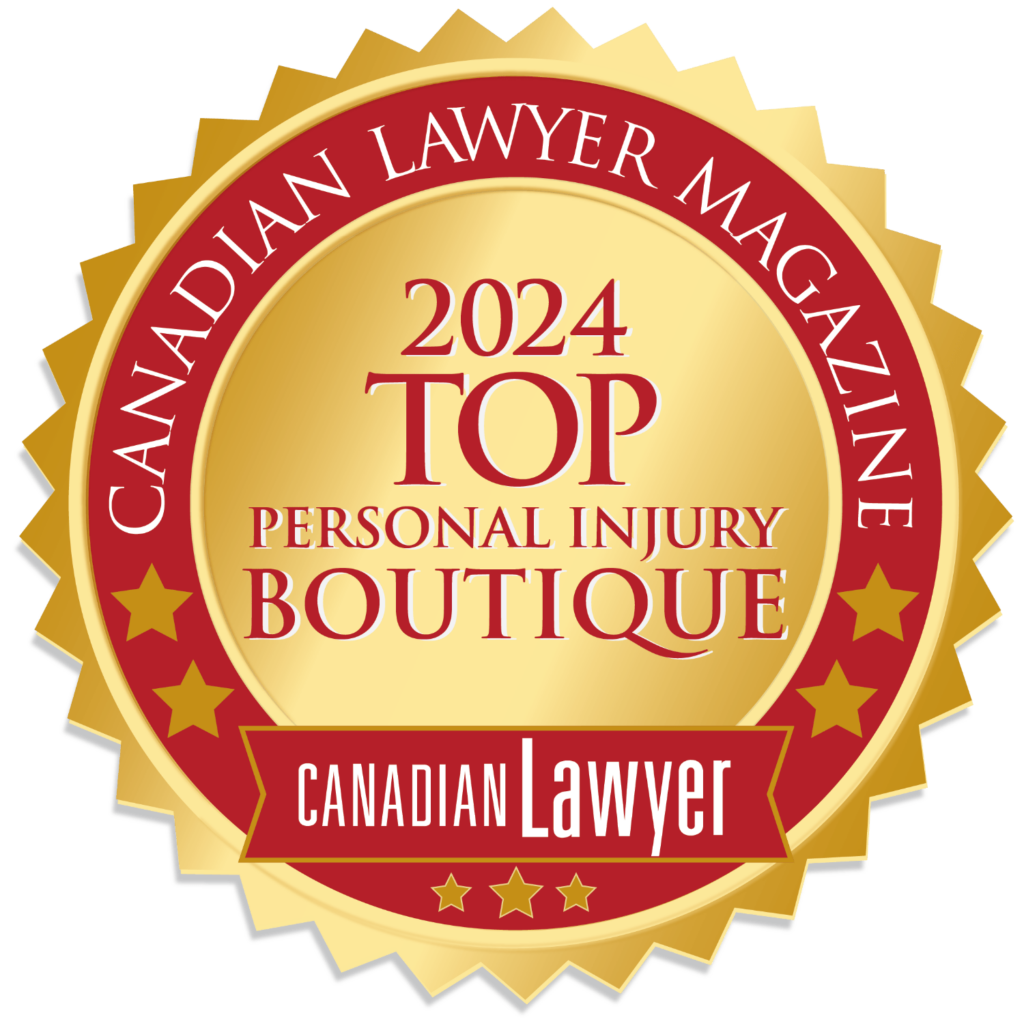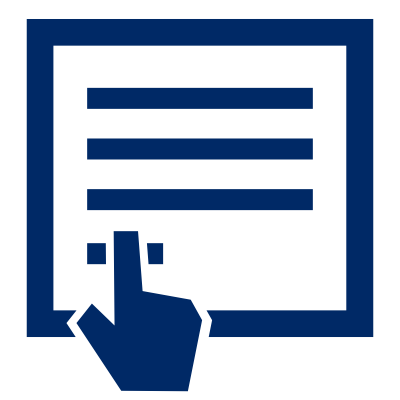
Car insurance. It’s something no one ever wants to use, but also something we are so relieved to have if we ever do.
If you sustain injuries from a car accident in Ontario, you are eligible to make an insurance claim for a variety of accident benefits that are part of Ontario’s Statutory Accident Benefits Schedule (SABS).
Motor vehicle drivers must carry a minimum amount of insurance coverage that includes SABS benefits. Fortunately, as a passenger, cyclist, pedestrian, or other road user involved in a motor vehicle accident, even if you do not have your own insurance, a person will have access to medical, rehabilitation and income replacement benefits if they are injured.
Contact your accident benefits insurer
You must notify your car insurer of your intention to apply for benefits within seven (7) days of sustaining injuries in an accident unless your injuries are so severe that you cannot reasonably contact them within that time. After you notify the insurer of your injuries, an adjuster assigned to your claim will send a package, containing Ontario Claim Forms (OCF), to you. You will need to fill them out and return to the insurer to receive the medical, rehabilitation and income replacement benefits. However, you could wait a week or two for these forms to come to you in the mail.
Complete the accident benefits forms
The insurer needs to approve the therapy you are seeking so you want to complete the OCF forms as soon as possible. You will need to complete the forms if you are off work and are seeking income replacement benefits. So, it is imperative to get the OCF forms completed and returned to the insurer as soon as possible. To prevent this delay, use the links in this blog post to download and complete the forms as soon as possible.
The OCF forms are standardized so everyone has the exact same forms. You can also access copies of these forms on The Financial Services Regulatory Authority of Ontario (FSRA) website. This way, if you are seeing your doctor or physiotherapist before the insurer’s forms arrive, you can bring them to be completed during your first appointment with them. I always recommend downloading/printing/completing these forms in the week following your motor vehicle accident to ensure your benefits are not delayed – particularly income-replacement benefits.
When you first see the number and length of these forms, you might feel overwhelmed – especially since you’re already dealing with painful injuries. But not all parts of these OCF forms are completed by the you. If, after reading through the forms, you are concerned you haven’t filled out something correctly, contact an experienced Howie, Sacks & Henry personal injury lawyer for a no cost initial consultation. We can answer your questions and advise you of your rights and options – including whether a tort claim for damages may be possible.
What accident benefits OCF forms do I need to complete?
To apply for accident benefits, you will need to complete the appropriate OCF forms. These forms are required to make a claim under the Statutory Accident Benefits Schedule (SABS), which provides compensation if you or a loved one suffered injuries as a result of a motor vehicle accident in Ontario.
OCF-1 – Application for Accident Benefits
The most important of the OCF forms is the OCF 1 – Application for Accident Benefits. If this form is not fully completed, the insurer does not need to pay you any benefits.
The OCF 1 requires you to provide your personal information, information about where and when the accident happened, whether you are unable to work, your employment income, whether you are attending school, whether you were responsible for looking after someone at the time of the accident, among other things.
The OCF 1 also includes several other OCF forms explained below. You are responsible for completing the OCF 1 and sending it back to the insurer within 30 days.
OCF-2 – Employers Confirmation
If your injuries make it impossible for you to work, you will not receive any income replacement benefits for the first week. Unless you have sick days/wage continuation benefits, as a part of your employment, you will not be able to recover salary/earnings for this week from any other source, even from an at fault driver in a lawsuit.
If you think you will be off work for more than seven days, you will need to submit an OCF 2 – Employers Confirmation form to the insurer. You must fill in the first part of the form and ask your employer to fill in the second portion. If you think you will be back to work within a week, do not complete this document or fill in the wage information on the OCF 1. The insurer does not need to know your personal financial information unless you are applying for income replacement benefits.
If you were not employed on the date of your accident, but you worked for at least 26 of the 52 weeks before the accident, you may still qualify for income replacement benefits. You would need to have your prior employer(s) complete the OCF 2 to ensure you received the benefit.
OCF-10 – Election of Income Replacement Benefit, Non-Earner or Caregiver Benefit
If you were not working at the time of the accident, you may be entitled to the Non-Earner Benefit. This benefit has a four-week deductible period and then pays $185.00 a week for 100 weeks for a total of $18,500. However, the test for this benefit is high – you must have a complete inability to carry on a normal life because of the injuries you sustained in the accident. Most people will not qualify for this benefit or cease to qualify for this before the two-year mark.
It is very important to consider which benefit is the right one for you before you submit this form to the insurer. You will not be able to change your selection unless you are deemed to have a catastrophic impairment (very severe injuries) later.
Your insurer may ask you to complete the OCF 10 – Election of Income Replacement, Non-Earner or Caregiver Benefit if they are not sure which benefit applies to you. Non-earner benefits are for people who had not worked more than 26 weeks in the 52 weeks before the accident. Caregiver Benefits are only available to those who have added this additional option to their policy.
OCF-3 – Disability Certificate
Although you will complete part of the OCF 3 – Disability Certificate, the majority will be completed by one of the health care professionals who are treating you. Your family doctor, physiotherapist, chiropractor, occupational therapist, or psychologist are just some of the medical professionals who can complete this form. The OCF 3 lists what injuries you sustained, any restrictions you have regarding work, school, or housekeeping, and the health care professional’s expectation for the duration of your injury. This form should be completed as soon as possible to ensure you can start therapy. An insurer will not reimburse you for any therapeutic treatments that are not approved.
If you’re unable to get an appointment with your doctor, a rehabilitation clinic will help you complete this form and submit it to the insurer. The health care professional who completes this portion of the form is entitled to $200.00 from the insurer.
OCF-5 – Permission to Disclose Health Information
The OCF 5 – Permission to Disclose Health Information must be completed to allow health care professionals to disclose your information to the insurer, and to permit your insurance company to request medical documents on your behalf.
OCF-6 – Expenses Claim Form
The OCF 6 – Expenses Claim Form is used to seek reimbursement from the insurance company for some of your out-of-pocket expenses. These expenses may include damaged clothing or glasses, accident-related dental repair work, prescriptions, and the ambulance bill. On this form, you would list your expense and provide the itemized receipt. For clothing/shoes damaged in the accident, the insurer will pay a reasonable replacement cost. If you had to purchase a heating pad, over-the-counter medication (such as Advil/Tylenol) or bandages for your wounds, you would attach your receipt for reimbursement. For prescription medication, first you must submit your receipt to your extended health carrier (EHC); the insurer would pay any balance remaining. If you don’t have an EHC, you would claim the full cost of the medication from the insurer.
OCF-23 – Treatment Confirmation Form
The OCF 23 – Treatment Confirmation Form is completed by a treatment provider when they assess you. This form, which could be completed by your doctor, physiotherapist, chiropractor, or occupational therapist (to name a few), will be sent by the medical practitioner to the insurance company.
OCF-18 – Treatment and Assessment Plan
If your injuries extend beyond soft tissue damage (for example, fractures, concussion, etc.), or if you have a preexisting medical condition that could/will delay recovery, be sure the provider(s) complete an OCF 18 – Treatment and Assessment Plan and not an OCF 23.
We can help
Returning your completed OCF forms promptly and accurately should help ensure that the benefits you deserve are paid or reimbursed in a timely manner. Missing an application deadline or filing incomplete paperwork could result in an insurer delaying or denying approval.
If you have specific questions about these forms, if you believe an insurer has unfairly delayed or denied your application, or if want to know about all your legal rights and options following a motor vehicle accident, contact one of Howie, Sacks & Henry LLP’s knowledgeable and experienced personal injury lawyers for a free, no obligation initial consultation.






